#Kinney Brothers Tobacco Company
Explore tagged Tumblr posts
Text
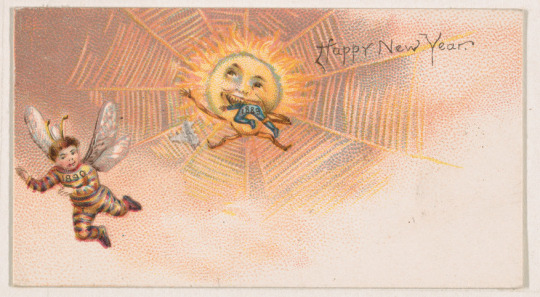
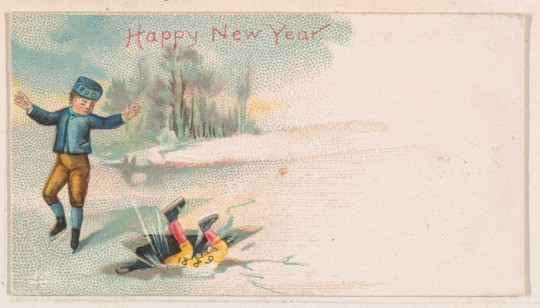
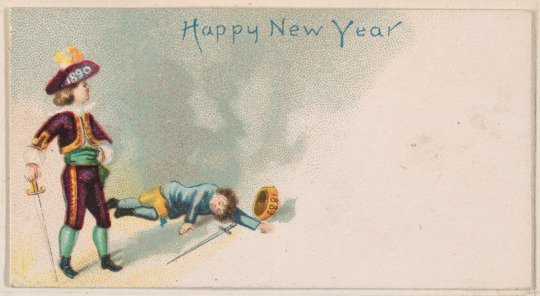
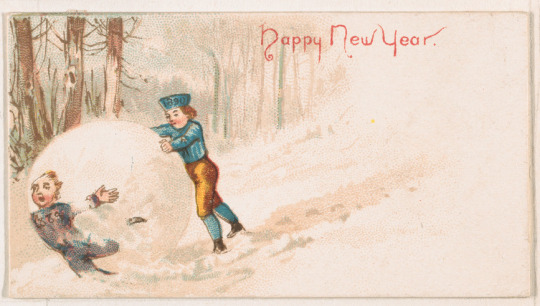
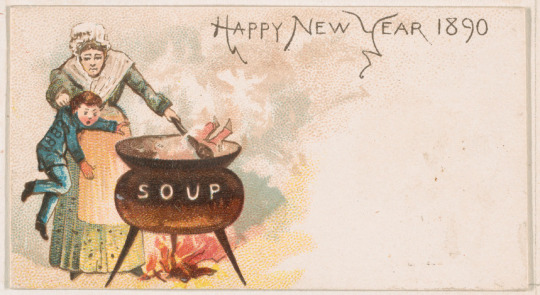
[•]
3 notes
·
View notes
Photo

Happy New Year. 1890
#new years#cards#Kinney Brothers Tobacco Company#american#1880s#1890s#19th century#bats#moon#bell#1890#color lithograph#lithograph#trading cards#prints
5 notes
·
View notes
Text

Kinney Brothers Tobacco Company matchbox cover courtesy of the Met
#matchbox cover#vintage illustration#witch#witches#we ride#illustration#art#the metropolitan museum of art
4 notes
·
View notes
Text
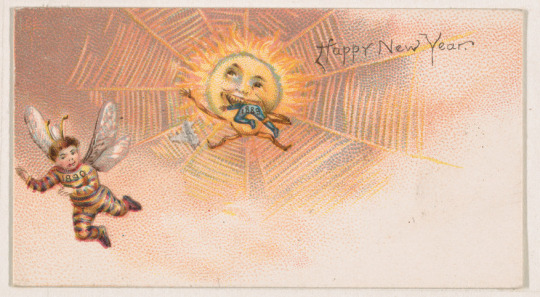
Happy New Year, from the New Years 1890 series Issued by Kinney Brothers Tobacco Company
3 notes
·
View notes
Text
My dudes, this looks like the ghost train I was trying to find out by Brandon Avenue!
My dudes, this looks like the ghost train I was trying to find out by Brandon Avenue!
Full disclosure — there is no ghost train in Roanoke, Virginia … at least as far as I am aware. In our Propaganda Era, I am loathe to start even a harmless urban legend. (Santa Claus is quite real, however.) Christmas card, Kinney Brothers Tobacco Company, 1899. Commercial color lithograph.

View On WordPress
#1899#Brandon Avenue SW#Christmas 2021#Eric Robert Nolan#Kinney Brothers Tobacco Company#Roanoke#Virginia
0 notes
Photo







Trade cards from the "New Years 1890 Cards" series, issued by Kinney Brothers Tobacco Company
The Metropolitan Museum of Art
378 notes
·
View notes
Text

One of fifty “New Years 1890 Cards” issued by the Kinney Brothers Tobacco Company. Color lithograph
19 notes
·
View notes
Text

Cameron & Cameron
AKA, Kinney Tobacco Co., Cameron Kinney
2500 East Cary Street
Built, 1884

[RVCJ93] — showing Cameron & Cameron’s Tobacco Factory
A family dedicated to making book on the weed.

(VCU) — 1889 Baist Atlas Map of Richmond — Plate 13 — showing the building’s original incarnation as the Kinney Tobacco Co., with Alex Cameron & Co Tobacco Factory right across the street
The firm of Alexander Cameron & Co. operates a plug tobacco factory here in Richmond; Cameron & Cameron are manufacturers of cigarettes, cheroots, smoking tobacco, long cut and cut plug at Richmond also. William Cameron & Bro. make plug, twist and navy tobaccos at Petersburg. The principals in Alexander Cameron & Co., are Alexander Cameron, of Richmond, and George Cameron, of Petersburg, and they are proprietors also of the Petersburg works. Alexander Cameron, Jr., is associated with them in their Australian trade, and is manager of all their affairs in the Antipodes.

(Find A Grave) — Alexander Cameron
Alexander Cameron & Co. have been established since 1865. Cameron & Cameron are successors to a business founded in the same year, and William Cameron & Bro. dates from 1856. The head of the house here and general manager of its affairs is Mr. Alexander Cameron. He personally directs the business, with the assistance of experienced heads of departments. He is considered one of the most enterprising, broad-minded and liberal residents of Richmond. Pie is accredited with a very large part in that industrial restoration which has come over the South, and especially this city, since the war.

(Antique Advertising Expert) — Cameron & Cameron tobacco tin
They make a specialty of high-grade goods, and have for their principal customers the best foreign and home trade.
They have, indeed, a world-wide business. Besides their vast Australian business, they have trade in India, South Africa and very largely, also, in all the British Isles, provinces and dependencies.

May 2019 — looking toward 2500 East Cary Street, western prominence
The plug tobacco factory of Alexander Cameron & Co. is situated at 2400 to 2422 Cary street, and 16 Twenty-fourth street. Their premises there comprise a brick factory on Cary street, 44 by 160 feet, and five stories high, and a warehouse and stemmery on Twenty-fourth street, 44 by 140 feet, and also five stories. The factory is fitted up with the most improved machinery, driven by a Green steam engine of 100 horsepower, with four boilers of 200 horse-power capacity, for drying purposes. From 200 to 300 hands are constantly employed in it, and it has a capacity for 1,500,000 pounds of manufactured tobacco yearly.

May 2019
The stemmery, also a massive brick structure, has a capacity for an equal amount of strips and leaf. The annual consumption of coal in the entire establishment is about 2,000 tons.
All styles of plug, twist and navy are produced from dark and bright leaf ; and from the stemmery are shipped dark and bright strips. The leading brands made in this factory are the "Venus," "Queen of the Seas," "St. Andrews," "Our Game," "Canary," "Cinderella," "Flower of All Nations," "Cable," "All the Rage," "Double Pet," "Signet," "Havelock," "Galatea," "Apollo," "Pioneer’s Delight," "Gloria," and Florinda."

(iCollector) — a tin of Cameron & Cameron’s English Bird’s Eye
The cigarette, cheroot and smoking tobacco factory of Cameron & Cameron is, likewise, a prodigious works, comprehensively equipped, and is included in the block just described. They employ 250 hands here, and have a working capacity for a large output of cigarettes and cheroots, and of about 10,000 pounds of smoking tobacco a day. This factory is famous for its "Gold Medal," "Golden Gate," "Richmond Club," "Favorite," and "Purity" paper cigarettes; "Havanettes," "Three and Five Beauties," "Purity," "Circle Club" "Cuban Sixes," and "Favorite" cheroots; "Cuban Dainties," "Little Darlings," "Little Giants," "Centennial Pets," "Cameron’s Entire," and "Old Hero" all tobacco cigarettes ; and their celebrated smoking mixtures, "Catac," "Golden Square," "Famosa," "Richmond Club," "Richmond Star," "English Birdseye," besides "Canuck," "Purity," "Raleigh," "Virginia Bell," "Favorite," and other brands of tobacco, put up in all styles and shapes, which are celebrated, not only in this country, but in all parts of the world.

[RVCJ93] — William Cameron and Company's Petersburgh Factory
William Cameron & Brother have their Petersburg factory at Perry and Brown streets, in that city. It is a handsome, lofty and imposing structure, of modern architectural design, which a city many times Petersburg’s size might well be proud to have. It occupies the site of the firm’s original factory, which was burned to the ground in 1878. It is four stories high, with an ornamental cupola, and has a front on Brown street of 180 feet, by a depth on Perry street of 240 feet. The offices, warehouse, engine-house and drying-rooms occupy separate buildings, which, together, form a spacious quadrangle, affording ample room for the special work of each department.

(Google Maps) — William Cameron and Company's Petersburgh Factory today
But of still higher importance than even substantial and capacious buildings, is the machinery with which the various styles of plug, twist and navy tobacco are prepared, and in this respect Cameron’s factory is splendidly equipped. This machinery was manufactured from designs specially prepared for this factory, and is run with three boilers of 250 horse-power capacity and a 100 horse-power engine, and its own electric light plant.
This factory alone employs over 600 hands, which means, in other words, that it feeds nearly 3,000 mouths, and has a capacity of over 2,500,000 pounds a year. Its leading brands, the "Raven," "Havelock," "Two Seas," "Orion," "Canary," "Our Chief," "Peach and Honey," "Mazeppa," and "Pluck," are famous wherever the virtues of superior aromatic "Cavendish" and "Twist" are appreciated.

May 2019 — 2500 East Cary street, eastern prominence
For many years past the management of this extensive and increasing business has received the personal attention of Mr. George Cameron, whose business ability and success have extended the firm’s operations year by year.
The appointments and facilities of the Australian factories of the Camerons are quite equal in every respect to those they maintain in this country. It is not so long since those at Sydney and Melbourne were enlarged and improved at a cost of over £20,000 each. At both of these Australian factories Messrs. Cameron & Bro. have also found it necessary to establish their own bonded warehouse to facilitate the trade there, and these warehouses are under the charge of officials detailed for that special duty by the Colonial Government.

(eBay) — a tin of Cameron & Cameron’s Richmond Club Mixture
The illustrations accompanying this matter show the external appearance of the Richmond and Petersburg factories of this house, and are somewhat an indication also of the scope of its remarkable business.
Mr. Alexander Cameron is an active participant, also, in the good work of the Chamber of Commerce.

May 2019 — show corbeling around the parapet & windows
Cameron & Cameron may be just an old factory building, but despite the Insidious Tree-Architecture Conspiracy making things difficult, it demonstrates how much craftsmanship went into the construction of such places. The highly detailed brick corbeling is completely unnecessary for an industrial building, but the builder did it anyway — an applaudable tip of the cap towards aesthetics.
(Cameron & Cameron is part of the Atlas RVA! Project)
Print Sources
[RVCJ93] Richmond, Virginia: The City on the James: The Book of Its Chamber of Commerce and Principal Business Interests. G. W. Engelhardt. 1893.
#mustseerva#rva#rvahistory#carystreet#perrystreetpetersburgh#brownstreetpetersburg#atlasrva#cityatomic#rvatobacco
4 notes
·
View notes
Photo

📷 centuriespast: Seven of Spades, The Witches Ride, from Harlequin Cards, 2nd Series (N220) issued by Kinney Bros. 1889 Issued by Kinney Brothers Tobacco Company The Met https://t.co/JyxGpnw1Mk https://ift.tt/1Aj5Sr4
0 notes
Text
In Algeria, online repression targets Amazigh protesters active in Hirak movement
Register at https://mignation.com The Only Social Network for Migrants. #Immigration, #Migration, #Mignation ---
New Post has been published on http://khalilhumam.com/in-algeria-online-repression-targets-amazigh-protesters-active-in-hirak-movement/
In Algeria, online repression targets Amazigh protesters active in Hirak movement
The term ‘zouave’ is used to tar Amazigh activists
Protesters stand with the Algerian flag and an Amazigh flag in Tizi Ouzou, Algeria. Photo by Kader Houali, used with permission.
< p class="p1">One Friday morning in late summer 2019, a lone woman marched through the center of Algiers, walked in front of a row of policemen and loudly called for the deposition of now-deceased army general Ahmed Gaid Salah, — hours ahead of the main anti-government march that afternoon.
The Amazigh flag was outlawed in Algeria in June 2019.
Earlier that summer, in June 2019, Gaid outlawed the Amazigh flag that belongs to the Kabyle Berbers, or Amazigh people. Following this decree, dozens of protesters were arrested for brandishing it alongside the national flag during Hirak protests, the popular uprising that erupted in February 2019 in opposition to then-president Abdelaziz Bouteflika running for a fifth term.
“This woman braved two things: In the morning, there are more arrests and it is unimaginable to speak about Gaid,” said Meziane Abane, a journalist who captured the woman on film. He uploaded the video to the Facebook page of his news website, L'Avant-Garde Algérie (Algerian authorities recently blocked the website).
Moments later, insults started pouring in. Comments like “you are the residue of France,” “France is your mother,” and ��son of France” flooded the comments section. In one day, the video had 1 million views and up to 4 million comments.
Those from the Kabyles region are often associated with France, Algeria's former colonial power. Online trolls use slurs to target and accuse those from Kabyles of being separatists that threaten “national unity.” “This is when I understood the power [of these online trolls],” said Abane, in a phone interview with Global Voices. “I was asking myself, when are they going to stop? Are they going to stop? They stopped at 6 in the morning!”
Abane himself is from the town of Bouïra in Kabylie, a mountainous region bordering the Mediterranean Sea and home to the Amazigh people. The comments — while rooted in a political battle — specifically target Kabyle activists with racist overtones.
The Kabylie region has been central to the Hirak movement. After Bouteflika stepped down in April, the movement continued to protest every Tuesday and Friday to demand an overhaul of the system (up until March when it “paused” for public health reasons due to COVID-19).
In December, Hirak activists boycotted the national elections. About 40 percent of the population voted nationally while parts of Kabylie saw a near 100 percent abstention rate.
Racism directed at Kabyle activists and citizens is not new, but the strength of this rhetoric intensified in 2019, according to Abane.
The history of the ‘zouave’ slur
Algerian Zouave, French Army, 1886, from the Military Series (N224) issued by Kinney Tobacco Company to promote Sweet Caporal Cigarettes. Photo via Wikimedia Commons via Kinney Brothers Tobacco Company / C.C.0.
Algerian journalist Khaled Drareni who covered the Hirak protests was sentenced to eight months in prison in April on charges of incitement and “attacking national unity.” He told Global Voices in an interview last year that his coverage of the Hirak attracted “copy-paste” comments accusing him of working for France, being paid by the French, and calling him a zouave.
The word zouave refers to a group of Algerian men from Kabylie who were hired by France during its occupation of Algeria, to be part of a light infantry unit working for the French army from 1830, said Ouissal Harize, a PhD student at Durham University, who researches violence as a colonial legacy in Algeria.
There are conflicting accounts of the term’s etymological origins. Harize traced it back to the Kabyle word izouf which means “to throw.” But he says the term could also come from an Arab mispronunciation of agawaw — the name of a confederation of Kabyle tribes.
By the 1860s, other armies also named their infantry regiments zouave. European painters such as Vincent Van Gogh chose the zouave as a popular portrait subject, she added.
While the presence of Kabyles in the French army is indeed verifiable, “the term is now being used by some to target and tarnish all Kabyles and so it is now being used as a means of racialization,” Harize explained.
“It is an ideological battle” between Arab nationalists and Amazigh movements, explained Nacer Djabi, a professor of sociology at the University of Algiers:
The Arab nationalists call people from Kabylie zouaves to say that they were with colonisation at the start, [in order] to create a complex for the Kabyle people who present themselves as great revolutionaries during the war for independence. It is a manipulation of national history for contemporary politics.
‘Hateful, toxic discourse’
Today, trolls take this historical discourse around the meaning and definition of zouave and create a conspiracy that the Hirak movement “is directed by a Franco-Berber secular elite, which is trying to surf the movement,” said Redouane Boudjema, media and communications professor at the University of Algiers.
Boudjema said that false information has been diffused about important historical Kabyle figures, such as Hocine Aït Ahmed, a commander of the first guerrillas to fight colonial rule and part of the post-independence provisional government before he resigned and created Algeria’s first opposition party.
Boudjema explained:
Fake news about Algerian history is used to feed a hateful, toxic discourse against a region [Kabylie], which was always at the vanguard of the struggle for democratic transition.
Over the last year, the current regime has instrumentalized this anti-Kabyle discourse to try to weaken the Hirak movement.
“Amazigh-ness” is recognized as one of the fundamental components of Algerian identity in the constitution and the authorities have taken steps in recent years to integrate Amazigh culture: Tamazight was established as an official language in 2016 and the first month of the Amazigh year — yannayer — was designated as a public holiday in 2018.
Despite this, in June 2019 as the Hirak protesters marched, Gaid cracked down on Amazigh expressions by outlawing their flag and arresting those who waved it.
Protesters march through the streets carrying a large Amazigh flag in Tizi Ouzou, Algeria. Photo by Kader Houali, used with permission.
“The discrimination of Kabylie existed well before February 22, and it was on an institutional level,” said Kader Houali, a lawyer and human rights activist from Tizi Ouzou in Kabylie, pointing out how long it took after independence for the language to be recognized. But he added that this type of discrimination exists in society, as well as in the system, and is fanned by certain public figures and journalists.
Houali, along with two other lawyers, filed a complaint against Naima Salhi, president of the Parti de l’équité et de la proclamation (PEP), for “inciting racial hatred and calling for the murder of Kabyle citizens.” She is one of a number of politicians and journalists that “attack everything that is different [non-Arab and non-Islamic],” he said.
Salhi uses her political party’s Facebook page to share video appeals for citizens “to marginalize Kabyles and execute what they call zouaves and ‘the community of the devil,’ it is a call for death and violence,” said Houali. Young bloggers post similar appeals, he said.
In one video published in late 2019, Salhi said that Kabyles are not Algerians but rather “immigrants” descended from the Vandal people. In the video, she called it a shame for “Algerians to let these dogs do what they like.”
In another video, recorded just after the death of Salah on December 23, 2019, Salhi warned: “Beware of this dangerous group and this flag.”
In a series of derogatory comments, she addressed Kabyles as Jews and said, “that is why we don’t get on with you.” She also referred to the outlawed Amazigh flag as a “zouave flag.”
While there is no official law that outlaws racial or regional discrimination, Houali hopes that they may be able to apply the section of the Penal Code that outlaws “threats to national unity” — ironically, the same law used to arrest protesters for waving the Amazigh flag.
Abane thinks that the anti-zouave campaign has managed to demobilize some of the Hirak protesters. “This is the refusal of other; It is primarily racism — they are targeting people from Kabylie and there is no action, neither from Facebook nor from the Algerian judicial system,” he said.
For now, all he can do is filter the repeated slurs from his Facebook page, but that hasn't stopped the trolls — they get around it by adding a single letter to flood him with comments that call him azouave instead.
This article is part of a series called “The identity matrix: platform regulation of online threats to expression in Africa.” These posts interrogate identity-driven online hate speech or discrimination based on language or geographic origin, misinformation and harassment (particularly against female activists and journalists) prevalent in digital spaces of seven African countries: Algeria, Cameroon, Ethiopia, Nigeria, Sudan, Tunisia and Uganda. The project is funded by the Africa Digital Rights Fund of The Collaboration on International ICT Policy for East and Southern Africa (CIPESA).
Written by Layli Foroudi · comments (0) Donate · Share this: twitter facebook reddit
0 notes
Text

[•]
#happy new year#love#mr. holly and miss mistletoe#new years#1890#greeting cards#vintage greeting card#kinney brothers tobacco company
2 notes
·
View notes
Text

[•]
#happy new year#new years#vintage greeting card#greeting cards#bats in the belfry#1890#kinney brothers tobacco company#bats
1 note
·
View note
Photo

Two actresses, from the Actresses series, issued by Kinney Brothers Tobacco Company, 1890
#actresses#people#women#costumes#1890#1890s#19th century#gilded age#north america#american#photographs#trading cards#albumen print#gal pals?
114 notes
·
View notes
Photo

MISS MURY. from the Actresses series, Issued by Kinney Brothers Tobacco Company, 1890
#costumes#ballet#actresses#people#women#1890s#gilded age#19th century#american#north america#photographs#trading cards#albumen prints#I thought the person on the right was a woman playing a man but I don't know
2 notes
·
View notes
Photo

Harriet Vernon, issued by Kinney Brothers Tobacco Company, 1890
#Harriet Vernon#american#north america#britain#europe#(kinney bros were american. harriet vernon was british)#trading cards#actresses#singers#burlesque#victorian#costumes#19th century#1890#1890s#fish#people#women#albumen print#photographs#fashion history#historical fashion
3 notes
·
View notes